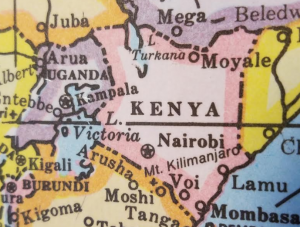By News Desk @bactiman63
Kenya officials are reporting a anthrax outbreak in Sotik Constituency. Six people from Itoik village were hospitalized and one died, according to a report in The Star.

It is believed the group came into contact with a cow who died from suspected anthrax.
Residents say seven cows have already died in the area following the suspected anthrax outbreak a week ago. Kapkures chief David Langat confirmed the incident, saying the area is prone to cases of anthrax.
County director of veterinary Dr. Wilson Serem confirmed the area covering Kipsonoi and Mutarakwa is prone to the disease, saying every year cases of the disease are reported.
He said the vaccination of animals against the disease will start in the next one week. “Anyone whose cow dies with symptoms that resemble anthrax should report to us immediately…they should not touch it to avert infections and deaths,” Serem said.
Anthrax is a bacterial pathogen in livestock and wild animals. Ruminants such as bison, cattle, sheep and goats are highly susceptible, and horses can also be infected.
Anthrax is a very serious disease of livestock because it can potentially cause the rapid loss of a large number of animals in a very short time. Affected animals are often found dead with no illness detected.
When conditions become favorable, the spores germinate into colonies of bacteria. An example would be a grazing cow ingests spores that in the cow, germinate, grow spread and eventually kill the animal. Anthrax is caused by the bacterium, Bacillus anthracis. This spore forming bacteria can survive in the environment for decades because of its ability to resist heat, cold, drying, etc. This is usually the infectious stage of anthrax.
There are no reports of person-to-person transmission of anthrax. People get anthrax by handling contaminated animal or animal products, consuming undercooked meat of infected animals and more recently, intentional release of spores.
There are three types of human anthrax with differing degrees of seriousness: cutaneous, gastrointestinal and inhalation.

